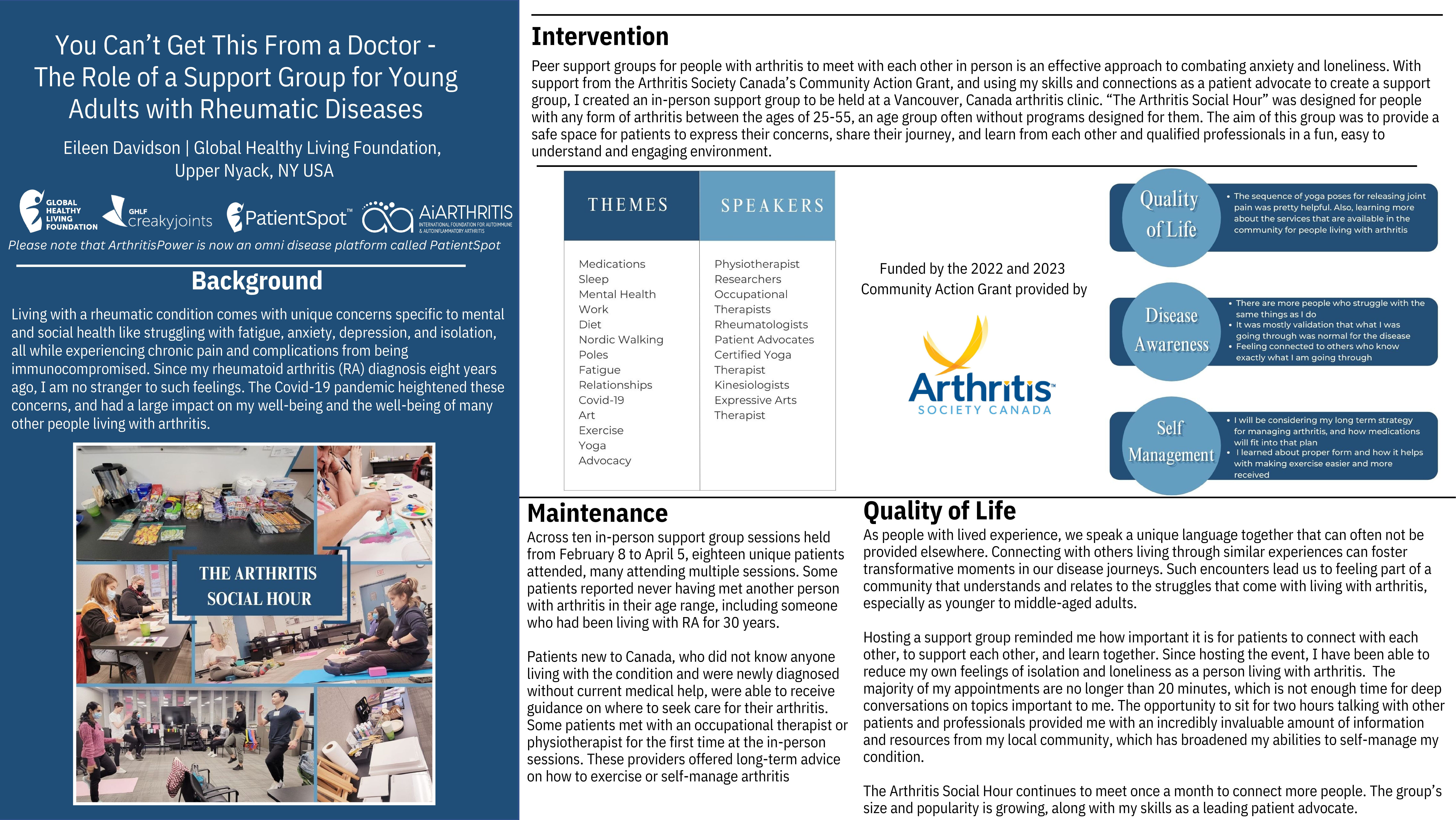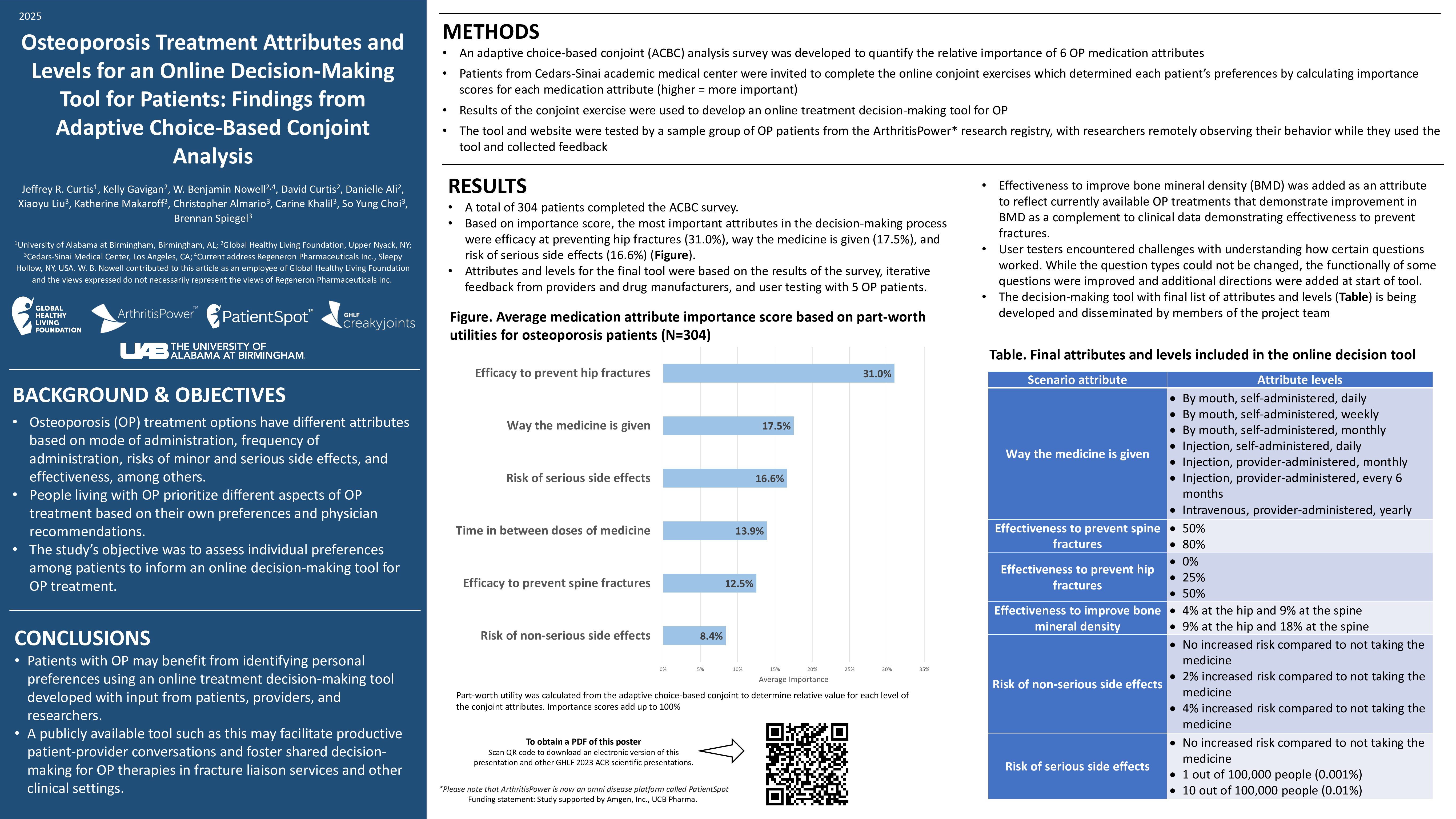There is a growing interest in using technology to improve patient care, which is evident by the several studies covering this topic being presented at the American College of Rheumatology Convergence this year.
Of course, telehealth was a major focus during the height of the pandemic, but using technology to manage your underlying condition goes beyond checking in with your doctor virtually. It might also involve using smartphone apps to track your symptoms, accessing virtual reality to manage your condition, or leveraging the latest bloodwork technology to get accurate results and track the effects of medication.
Here’s what you need to know about the latest research — and how it could help you manage your disease.
The Smartphone App Functions Rheumatology Patients Prioritize
In a new study, researchers set out to determine what types of information adults with rheumatic and musculoskeletal disease (RMD) consider most important to know about their disease — and what functions they would use in a smartphone app, including the ability to access this information.
An online survey on educational and app function priorities was completed by 2,159 patients of whom 78.3 percent were female, 81.2 percent were white, and the mean age was 64.2 years. The most common RMDs of survey respondents were rheumatoid arthritis (38.8 percent), osteoarthritis (15.6 percent), and psoriatic arthritis (13.1 percent).
Five out of the 10 topics that more than 75 percent of patients considered extremely important had to do with medication options and expectations. Meanwhile, the one app function that a majority of patients (57.5 percent) would like to have in an app specifically for RMD was the ability to view their lab results. Other functions that were prioritized as being useful included scheduling/tracking medical appointments or medications, and recording symptoms or flares and sharing such information with their doctor between visits.
“Patient education and health tracking, including lab results, are important to people living with rheumatic conditions, and these functions can be brought to patients via mobile apps, we found,” says study author W. Benjamin Nowell, PhD, Director of Patient-Centered Research at CreakyJoints and principal investigator of the ArthritisPower Research Registry. “Specifically, patients being seen in community rheumatology practices prioritized learning about their medication options and what they can expect from treatment in terms of how quickly it will work and the potential side effects they may experience.”
It’s important to note that technology is not embraced by everyone who lives with RMD. A quarter of patients overall noted that they have no interest in using a smartphone app for their rheumatologic condition. The survey also asked whether patients own and use an activity tracking device such as an Apple Watch or Fitbit. Researchers found that more than half of patients neither own nor do they plan to get a smartwatch or activity tracker. However, if you are someone who does choose to leverage technology as part of your disease management, you are in good company. Apps and devices can be useful tools to keep you informed about your condition and to stay on track with doctor’s appointments and disease self-management.
Key Uses for Home-Based Telehealth in Rheumatology
Home-based telehealth appointments became more common during the COVID-19 pandemic — and now, patients request these appointments, even when in-person visits are possible.
In a new study, researchers selected 17 studies and four abstracts that met inclusion criteria to analyze how home-based telehealth can safely and effectively complement in-person care for certain rheumatologic conditions, particularly inflammatory arthritis and gout.
Two studies supported the use of a telehealth pre-visit for new patients with inflammatory back pain and for early inflammatory arthritis. Meanwhile, two survey studies showed that providers were more accepting of home-based telehealth appointments for stable patients than for more active patients or those with more complex conditions.
Four studies reported the successful use of remotely collected disease activity measures in low disease activity but not in patients with higher disease activity. Another study supported the use of protocolized uric acid management (when physicians decrease uric acid methodically using urate-lowering therapies) through telehealth visits.
“There are some data that suggest that inflammatory arthritis and inflammatory back pain patients might be good patients to be selected for telehealth visits, if they meet certain criteria,” says study author Alexander Peck, DO. “We also found that the majority of rheumatology providers doing telehealth visits were most comfortable with established patients as opposed to new patients — and specifically for people with stable disease.”
Two studies showed that telehealth satisfaction was generally high, but lower with increasing patient age.
“Home-based telehealth definitely has a lot of promise as a viable modality for patient care,” says Dr. Peck. “As more literature comes out showing the effectiveness of, for example, disease monitoring of rheumatoid arthritis and telehealth visits, and adapting our typical [clinical] disease activity measures to telehealth, it’ll be a lot more incorporated.”
Acceptance of Virtual Reality for the Management of Rheumatological Conditions
People with rheumatologic conditions are enthusiastic about using virtual reality to manage their disease state, even if they don’t have any prior experience with it, per a new study. Virtual reality refers to wearing a headset so that you see a screen and hear sounds in an immersive way that blocks out the real world.
More than 500 adults with rheumatologic conditions completed an online survey, which covered topics like prior experience with virtual reality, perceived usefulness and potential enjoyment of using virtual reality, and willingness to use virtual reality to learn how rheumatologic conditions affect the body and what daily life might be like in more advanced stages of disease.
Researchers also compared perceived usefulness, enjoyment, and willingness to use virtual reality in people with and without prior virtual reality experience.
Most participants were female (86.6 percent) and white (88.3 percent) — and the mean age was 59.4 years. The most commonly reported conditions were rheumatoid arthritis (59.7 percent) and osteoarthritis (53.9 percent).
The majority of respondents thought they could learn useful information about their condition using virtual reality, while just a small percentage did not think it would be useful.
About one-third of respondents who had never used virtual reality thought it would be useful for learning information about their condition, while the majority were unsure. Three-fourths of respondents who did have prior experience using virtual reality reported that they thought they would enjoy using it to learn more about their condition, while only half of the respondents with no prior experience using virtual reality thought they might enjoy using it for this purpose.
Almost all respondents expressed willingness to use virtual reality to manage their disease, regardless of prior experience.
The most common uses of virtual reality that patients approved of were for exercise (77.8 percent), physical therapy (73.8 percent), and education (61.8 percent).
“Knowing what patients think and feel about virtual reality, and how many of them are actually even familiar with the technology, will help us better understand how we can incorporate virtual reality interventions into rheumatic disease research clinical practice,” says study author Jeffrey Curtis, MD.
How Patients Perceive Lab Work for Rheumatoid Arthritis
Researchers wanted to examine how patients with rheumatoid arthritis perceive lab testing and the use of blood tests for treatment response and medication selections in a new study.
In May and June 2022, 376 rheumatoid arthritis patients completed an online survey (86.4 percent were female, 89.3 percent were white, and the mean age was 58.1). Patients were on medications including csDMARD (75.1 percent), bDMARD (53.6 percent), and tsDMARD (17.8 percent).
Patients perceived that their doctors order lab work in order to check for active inflammation (86.4 percent) or assess side effects of medications (81.6 percent).
Other reasons included:
- Checking for positive rheumatoid factor or other RA antibodies (67.8 percent)
- Checking whether medication is working (59.3 percent)
- Checking whether vitamin levels are good (55.3 percent)
- Checking whether RA is progressing (54.3 percent)
Patients reported that their rheumatologists most often ordered complete blood count, liver function tests, c-reactive protein (CRP), and erythrocyte sedimentation rate (ESR) to monitor RA, but felt that CRP was most helpful to themselves in understanding their disease activity.
“People living with RA really pay attention to their blood work with the doctor’s help,” says study author Dr. Nowell. “Patients use RA-related blood work to keep an eye on active inflammation and to check for medication side effects, and most often mentioned that CRP was helpful to them in understanding changes in their disease activity.”
Most patients were somewhat or very concerned that their current medication would stop working for them in the future (91 percent) or that they would waste time trying a medication that may not work for them (81.6 percent).
If they needed to change treatments in the future, a majority of patients (89.4 percent) would be very or extremely interested in taking a blood test that could help predict whether the medication their doctor suggests will work well for them. Accuracy was more important to patients than both cost and wait time. (Read about personalized and precision medicine, which allows doctors to better tailor treatment plans and determine the right medication for you.)
“Given that patients prioritize the ability to view lab results in a potential app for rheumatic disease, this may be the feature that attracts patients to using an app. Once they are in the app, patients may then opt to learn about medication options and what to expect, or use it to track their symptoms with patient-reported outcome measures, especially if this was something suggested by their doctor as a way of checking on them between in-person visits.,” says Dr. Nowell.
Be Part of Research with ArthritisPower
Join CreakyJoints’ patient-centered research registry and participate in voluntary studies about managing arthritis. Learn more and sign up here.
Curtis J, et al. Acceptance of Virtual Reality for Managing Their Disease Among People with Rheumatologic Conditions with and Without Prior Experience Using Virtual Reality [abstract]. American College of Rheumatology. November 2022. https://acrabstracts.org/abstract/acceptance-of-virtual-reality-for-managing-their-disease-among-people-with-rheumatologic-conditions-with-and-without-prior-experience-using-virtual-reality/.
Interview with study author Alexander Peck, DO
Interview with study author W. Benjamin Nowell, PhD, Director of Patient-Centered Research at CreakyJoints and principal investigator of the ArthritisPower Research Registry.
Interview with study author Jeffrey Curtis, MD
Nowell W, et al. Patient Perceptions of Rheumatoid Arthritis Blood Work: A Cross-sectional Survey in the ArthritisPower Registry. Arthritis & Rheumatology. November 8, 2022. https://acrabstracts.org/abstract/patient-perceptions-of-rheumatoid-arthritis-blood-work-a-cross-sectional-survey-in-the-arthritispower-registry/.
Nowell WB, et al. What Education Topics and Smartphone App Functions Do Rheumatology Patients Consider Important? Survey of Patients in a Community-Based Practice Network [abstract]. Arthritis & Rheumatology. November 2022. https://acrabstracts.org/abstract/what-education-topics-and-smartphone-app-functions-do-rheumatology-patients-consider-important-survey-of-patients-in-a-community-based-practice-network/.
Peck A, et al. Home-Based Telehealth in Rheumatology: A Systematic Review & Narrative Synthesis [abstract]. Arthritis & Rheumatology. November 2022. https://acrabstracts.org/abstract/home-based-telehealth-in-rheumatology-a-systematic-review-narrative-synthesis/.












